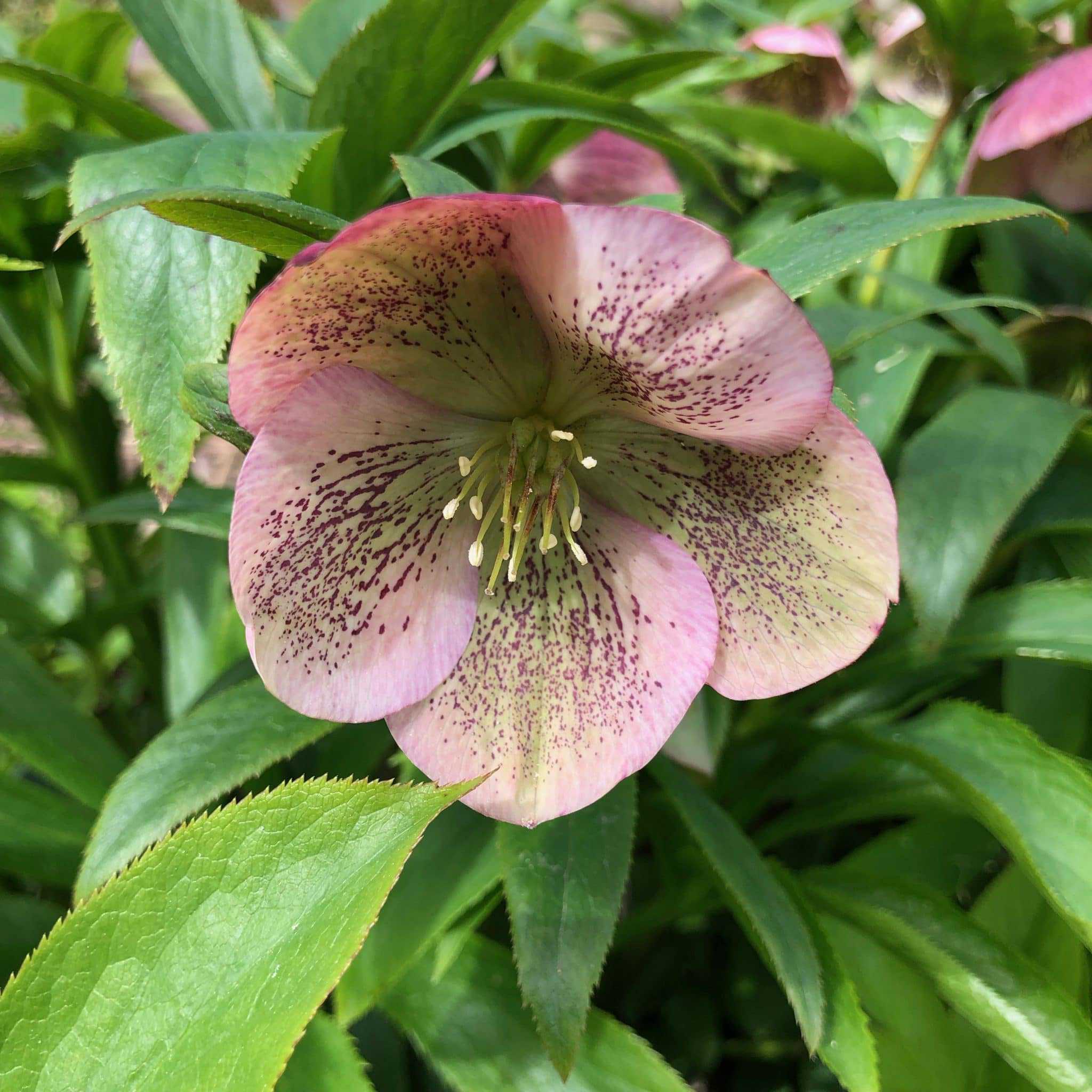Wide ribbons of rosy-coloured hellebores are weaving through our shady border as the crocus and snowdrops recede. Now that most of last year’s spent leaves have been removed, their nodding flowers on strong stems can be better appreciated. I visit them daily.
I was late to the hellebore bandwagon for two reasons. First, they’re rather pricey perennials. Young plants need to bulk up before they start to bloom, adding to the cost of production.
Secondly, I assumed they required coddling, not my strong suit in the garden. This proved false as I began to add a few at a time in our Zone 6 garden where snow cover is iffy, greedy mature tree roots suck up moisture and nutrients, and the soil is clay. (In other words, the nemesis of many plants: dry shade.)
Those few plants, mainly cultivars of Helleborus orientalis, added more than a dozen years ago have thrived. Each year, I usually buy one new cultivar — especially if it was bred to have upward-facing flowers — for what has now become known as the hellebore border.

There is a slight downside to this modest success: Happy hellebores set an enormous amount of seed with an amazing rate of germination. I now rigorously deadhead them and thin out thick patches of seedlings every summer to give other plants in the border a fighting chance.

• “Unpredictable Hellebore Seedlings” suggests ways to use a bounty of seedlings.
• An interview with Judith Knott Tyler, who wrote Hellebores: A Comprehensive Guide, and Margaret Roach of A Way to Garden.
Timely book on saving seeds
It’s likely more gardeners will be growing food and flowers from seed this year, and with that may come an increased interest in saving seed for next year’s garden. Saving Seeds: A Home Gardener’s Guide to Preserving Plant Biodiversity is a handy new book by Dan Jason, owner of Salt Spring Seeds in B.C. The compact guide introduces readers to the process of harvesting and storing seed, and offers encouragement to those involved with Seedy Saturdays and other seed-saving organizations.
To enter our draw for a copy of Saving Seeds, fill out the entry form.
Published by Harbour Publishing; 96 pages; $14.95.
How to spring into action
It’s always important to take it slow when starting spring chores — advice for you, not your garden. This year, exercising caution is more important than ever; health-care professionals won’t be available to help your pulled ligaments and sore backs for some time.
“Stretches for Gardeners Really Help” provides tips on how to limber up. Take care.
Go vertical with vegetables
Gardening in a small space or on a balcony or patio doesn’t mean you need to forego planting a mini Victory Garden this year. Grow vertically with your vegetables. Niki Jabbour tells you how in “Vertical Vegetables Save Space.”
Update on community gardens
For Ontario residents who wish to voice their opinion on the shuttering of community gardens due to COVID-19 restrictions, here’s a website to consult.
Tune into a podcast
When you’re out for your daily walk (alone, of course), take your phone and ear buds and let a gardening podcast keep you company. Donna Balzer, of Qualicum Beach, B.C., has eight podcasts available for download on her website Helping Gardens Grow. Topics include: growing citrus in the north; growing greens in a small space; and tomato growing tips.
In fact, my news feeds and inbox have been inundated with tomato growing tips, advice, taste test results and recommendations. We will all have a bumper crop if we follow even half of everyone’s recommendations.








